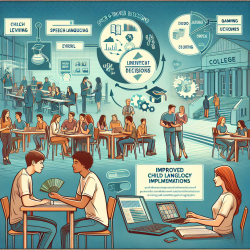The study by Winkelaar, Arnold, and Johnson compared the effectiveness of live and recorded presentations in teaching speechreading. Nineteen participants, all second-year students from the Communicative Disorders Program, were tested using the Utley Sentence Test. They were exposed to both live and videotaped presentations of speechreading material. The results were illuminating: participants scored significantly higher in the live condition compared to the recorded one.
Key Findings
- Participants scored 10.19% higher in word recognition and 10.87% higher in meaning comprehension during live presentations.
- Live-video correlations indicated that predicting optimal speechreading performance from recorded scores is feasible.
- Consistent presentation in recorded material offers certain advantages, but live presentations provide richer visual information.
Implementing Research Insights in Your Practice
Based on these findings, here are some actionable steps to enhance your speechreading therapy sessions:
- Prioritize Live Interactions: Whenever possible, conduct live speechreading sessions. The richer visual cues in live presentations can lead to better comprehension and learning outcomes.
- Utilize Recorded Sessions for Consistency: Use recorded sessions to ensure consistent presentation of material. This can be particularly useful for initial assessments and standardized testing.
- Blend Live and Recorded Methods: A hybrid approach can offer the best of both worlds. Start with recorded sessions to build a baseline and follow up with live sessions to enhance and solidify learning.
- Optimize Viewing Conditions: Ensure optimal viewing angles and distances during both live and recorded sessions. This includes maintaining a vertical viewing angle between -35 and +30 degrees and a horizontal viewing angle between 0 and 40 degrees, with a viewing distance of approximately five feet.
Encouraging Further Research
While this study provides valuable insights, it also highlights the need for further research. Exploring different speakers, test stimuli, and the impact on various age groups and hearing impairment levels can deepen our understanding of effective speechreading techniques.
Consider collaborating with academic institutions or conducting small-scale studies within your practice to contribute to this evolving field. By sharing your findings with the broader community, you can help shape future speechreading therapy practices.
To read the original research paper, please follow this link: A Comparison of Speechreading Abilities Using Live and Recorded Presentations.










